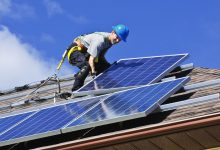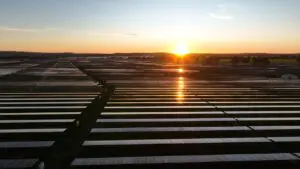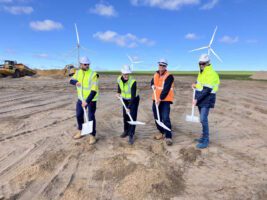Australian Energy Market Operator boss Audrey Zibelman says Australian households will provide at least one quarter of the country’s electricity needs by 2040, as part of a “phenomenal” transition that will see the “democratisation” of energy and the closure of most coal plants.
“We are leading the world, we’re not just second, we’re not just third, we are leading world in the per capita growth in rooftop solar,” Zibelman told the National Smart Energy Summit in Sydney on Tuesday.
Zibelman said that parts of grid were already sourcing almost 50% of their power needs from solar produced on the rooftops of homes. By 2040, she said, “25 per cent of energy produced in Australia will come from homes. That’s a phenomenal change.”
Over the next 15 years, some 15 gigawatts of coal fired generation – around two thirds of the current fleet, would come to the end of their operating lives and would close.
Renewables – wind and solar combined with storage – were clearly the most inexpensive way of replacing retiring coal. It would change the face of the industry, cut emissions and provide reliable and secure power.
“That’s not a political play, that’s an economic play,” Zibelman said.
To achieve this, however, requires a plan – both to build new network infrastructure, particularly transmission lines to link the wind and solar resources from various parts of the country, and to re-design of the market rules which are designed around the coal-based grid of the 1990s, but are no longer fit-for-purpose with new technologies.
Some of that is now in train – after years after policy and regulatory delay. AEMO has released its first version of its Integrated System Plan and will release a draft of the 2020 version later this week.
That ISP is effectively a 20-year blueprint on how to manage the transition – at various speeds, including a radical “step change” – and keep the lights on and prices down.
It includes urgent additions and augmentations to the grid, and medium to long term plans. Zibelman says the recent COAG energy ministers’ meeting agreed to “action” the ISP and also recognised the need to get on with the redesign of the market.
“We can’t wait any more. We can’t take the market design of the 1990s and just think it will work,” Zibelman said. “We need to value storage, speech, and the ability of consumers to respond to price signals. “The good thing is that we are well on the path to that.”








